Your cart is currently empty!
Month: July 2024
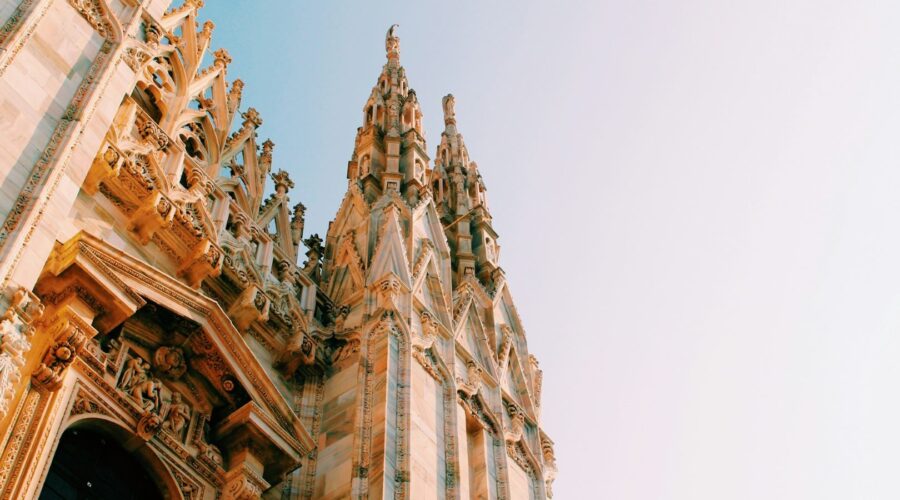
Discover the History and Significance of the Holy Redeemer Catholic Church
A Spiritual Haven in the Heart of the Community
The Holy Redeemer Catholic Church stands as a testament to faith, community, and architectural beauty. Its doors have been open for over a century, welcoming countless worshipers seeking solace, guidance, and a connection with the divine. Let us embark on a journey to explore the rich history, spiritual significance, and awe-inspiring architecture of this beloved church.
History: A Tapestry of Faith and Devotion
The story of Holy Redeemer Church begins in the late 19th century, when the rapidly growing Catholic community in the area yearned for a dedicated place of worship. In 1890, a group of devout Catholics purchased a lot on Grand Avenue, and the cornerstone was laid the following year.
Under the leadership of Father James J. Greene, the church was completed in 1892. It quickly became a focal point for the community, providing spiritual nourishment and a sense of belonging. Over the years, the church has undergone numerous renovations and expansions, each reflecting the changing needs of the congregation and the passage of time.
Architecture: A Symphony of Stone and Spirit
Holy Redeemer Church is a stunning example of Gothic Revival architecture, characterized by its soaring spires, pointed arches, and intricate stonework. The exterior facade features a grand entrance with a rose window above, symbolizing the promise of salvation. The interior is equally impressive, with its high vaulted ceilings, stained-glass windows, and ornate altar.
Community: A Vibrant Tapestry of Faith
Holy Redeemer Church is more than just a building; it is the heart of a thriving community. The congregation is a diverse and welcoming group, drawn together by their shared faith and a desire to serve their neighbors. The church offers a wide range of programs and activities, including faith formation classes, youth groups, and social justice initiatives.
The church also plays a vital role in the wider community, providing support for those in need through outreach programs, parish meals, and emergency assistance. It is a beacon of hope and a source of inspiration for all who cross its threshold.
The Holy Redeemer Catholic Church Today
Today, Holy Redeemer Catholic Church continues to be a vibrant and active parish. It offers a variety of Mass times, provides spiritual guidance through its priests and deacons, and hosts numerous community events and programs.
Whether you are a lifelong parishioner or a visitor seeking a spiritual sanctuary, Holy Redeemer Church welcomes you with open arms. Its rich history, inspiring architecture, and strong community spirit make it a must-visit destination for anyone interested in the Catholic faith or the cultural heritage of the area.
Practical Information:
- Address: 1724 W Grand Ave, Chicago, IL 60622
- Phone: (773) 421-5114
- Website: holyredeemerchurchchicago.org
- Mass Times:
- Monday-Friday: 8:00 AM
- Saturday: 4:30 PM
- Sunday: 7:30 AM, 10:00 AM, and 12:30 PM
Additional Resources:
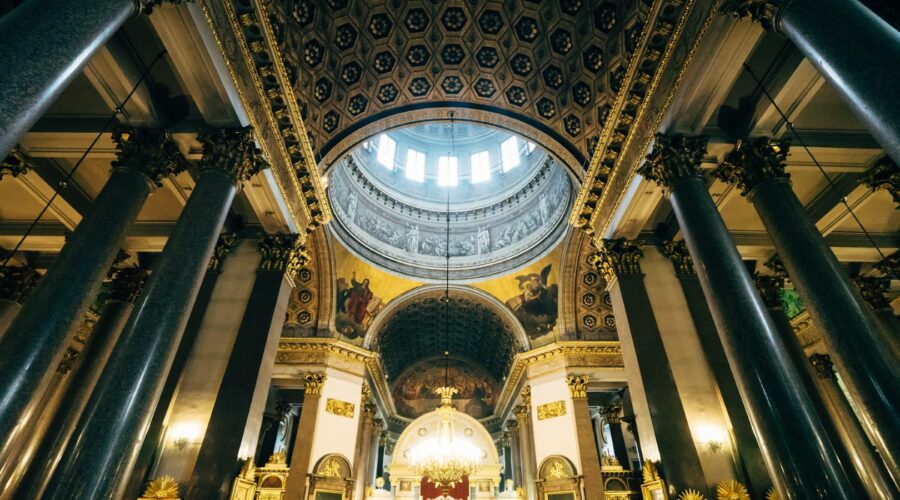
St. Michael the Archangel Church: A Haven of Faith and Heritage
“`html
Nestled amidst the bustling streets of a vibrant metropolis, St. Michael the Archangel Church stands as a beacon of faith, a testament to the enduring legacy of the past, and a vibrant hub for community engagement. With its towering spires reaching towards the heavens and its intricate architecture, the church invites all who enter to experience a profound connection with the divine and to explore the rich history that has shaped its existence.
A Journey Through History
The origins of St. Michael the Archangel Church can be traced back to the early 18th century, when the burgeoning Catholic community in the area sought to establish a place of worship worthy of their growing congregation. The construction of the church commenced in 1726, and after years of meticulous planning and execution, it was finally consecrated in 1733.
Over the centuries, St. Michael the Archangel Church has undergone several expansions and renovations, reflecting the growth and evolution of the surrounding community. The most significant addition to the church was the construction of the grand Gothic Revival nave in the 19th century, which doubled the size of the original structure.
Architectural Marvels
St. Michael the Archangel Church is a masterpiece of ecclesiastical architecture that seamlessly blends various architectural styles. The exterior of the church is characterized by its imposing Gothic Revival façade, complete with pointed arches, ribbed vaulting, and elaborate decorative elements.
- The Nave: The nave, the central part of the church, is a magnificent space with soaring ribbed vaults and stained-glass windows that flood the interior with a kaleidoscope of colors. The intricate carvings and vibrant frescoes adorning the walls depict biblical scenes and the lives of saints.
- The Sanctuary: The sanctuary, the most sacred space within the church, is home to the altar, where the sacraments are celebrated. The ornate reredos behind the altar, adorned with intricate carvings and gilded details, is a work of art in its own right.
- The Transepts: The transepts, the arms of the church that extend from the nave, feature side altars dedicated to various saints. The stained-glass windows in the transepts depict scenes from the life of St. Michael the Archangel, the patron saint of the church.
A Vibrant Community
Beyond its architectural grandeur, St. Michael the Archangel Church is a thriving hub for community engagement. The parish offers a wide array of programs, events, and ministries that cater to the spiritual, social, and educational needs of its diverse congregation.
Community Outreach
- The church operates a soup kitchen that provides meals to those in need.
- Volunteers from the parish visit the sick and elderly in hospitals and nursing homes.
- The church hosts clothing drives and other charitable initiatives to support the underprivileged.
Educational and Spiritual Programs
- The church offers religious education classes for children and adults.
- Bible study and prayer groups provide opportunities for spiritual growth and community.
- The church hosts lectures, workshops, and retreats on a variety of religious and topical issues.
Social Events
- The parish organizes regular social gatherings, such as potlucks, picnics, and holiday celebrations.
- The church has a vibrant choir that performs during masses and special events.
- The parish offers a variety of youth programs, including sports, music, and drama.
A Legacy of Service
Throughout its long and storied history, St. Michael the Archangel Church has played an integral role in shaping the social and spiritual fabric of its community. The church has been a pillar of support during times of crisis, providing refuge and assistance to those in need.
Year Event 1793 The church provided shelter and refuge to refugees during the Haitian Revolution. 1861 The church raised funds for the Union Army during the American Civil War. 1929 The church established a food pantry to help families affected by the Great Depression. 1968 The church played a key role in the civil rights movement, providing meeting space for activists and organizing voter registration drives. Visiting St. Michael the Archangel Church
St. Michael the Archangel Church is located at 225 West 99th Street in New York City. The church is open to visitors daily from 8 am to 6 pm. Guided tours are available upon request.
Mass Times
- Sunday: 8:00 am, 10:00 am, 12:00 pm, 5:00 pm
- Monday-Saturday: 8:00 am, 12:10 pm
For more information, please visit the church’s website at www.stmichaelarchangelnyc.org.
St. Michael the Archangel Church is a place of profound spiritual connection, a repository of rich history, and a vibrant hub for community engagement. Whether you are a devout parishioner, a curious visitor, or simply an admirer of architectural marvels, the church invites you to step inside its hallowed halls and experience its timeless beauty and enduring legacy.
“`
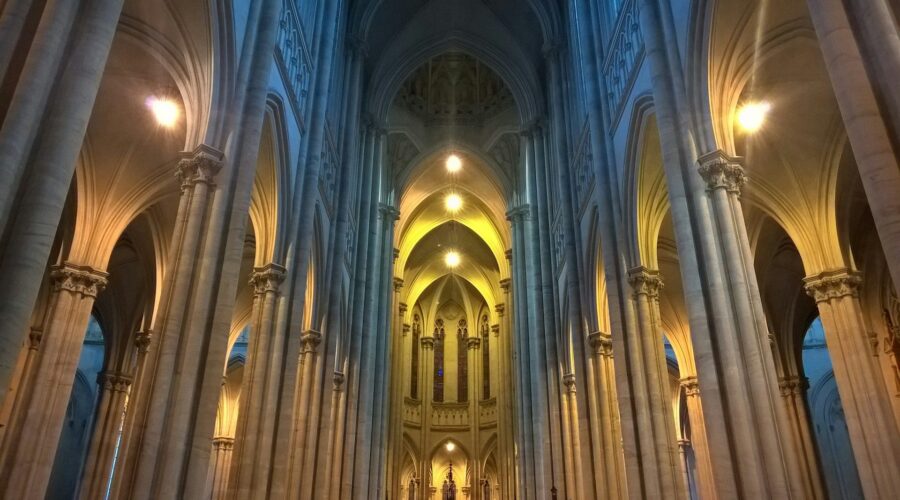
Discover the Rich History and Beliefs of Concordia Lutheran Church
An Overview of Concordia Lutheran Church
Concordia Lutheran Church is a Christian denomination within the Lutheran tradition. It was founded in 1847 by German immigrants in St. Louis, Missouri. Today, Concordia Lutheran Church has over 3,000 congregations in the United States and Canada, with an estimated membership of over 1 million.
Concordia Lutheran Church is known for its strong commitment to the Bible as the inspired Word of God and to the Lutheran Confessions as a true exposition of its teachings.
History of Concordia Lutheran Church
Early History
The roots of Concordia Lutheran Church can be traced back to the Lutheran Reformation of the 16th century. Martin Luther’s teachings about salvation by grace through faith alone and the authority of Scripture sparked a movement that led to the establishment of Lutheran churches throughout Europe.
In the late 18th century, German immigrants began to arrive in the United States. These immigrants brought their Lutheran faith with them and established congregations in various cities and towns.
Establishment of Concordia Lutheran Church
In 1847, a group of German Lutheran pastors and laymen met in St. Louis, Missouri, and founded Concordia Lutheran Church. The name “Concordia” comes from the Latin word for “harmony” and reflects the church’s desire to be a united body.
The early years of Concordia Lutheran Church were marked by rapid growth. The church expanded westward with the German immigrants, and congregations were established in many new communities.
20th Century
The 20th century brought new challenges to Concordia Lutheran Church. The church faced the challenges of urbanization, immigration, and social change.
In the 1960s, Concordia Lutheran Church experienced a period of theological controversy. The church’s traditionalist and modernist factions debated issues such as the authority of Scripture, the role of women in the church, and the relationship between science and faith.
21st Century
In the 21st century, Concordia Lutheran Church continues to grapple with the challenges of a changing world. The church is committed to its historic mission of proclaiming the gospel of Jesus Christ and serving its members and communities.
Beliefs of Concordia Lutheran Church
Concordia Lutheran Church believes in the Holy Trinity: the Father, the Son, and the Holy Spirit.
The church believes that the Bible is the inspired Word of God and the sole authority for faith and practice.
Concordia Lutheran Church adheres to the Lutheran Confessions, which it believes are a true exposition of Scripture.
The church believes that salvation is by grace through faith alone.
Concordia Lutheran Church practices infant baptism and believes that baptism is a sacrament instituted by Jesus Christ.
The church believes that the Lord’s Supper is a sacrament instituted by Jesus Christ and that it is a means of grace.
Worship in Concordia Lutheran Church
Worship in Concordia Lutheran Church is centered on the Word of God and the sacraments of baptism and the Lord’s Supper.
The church’s liturgy is based on the Lutheran Confessions and is characterized by its simplicity and beauty.
Music plays an important role in worship in Concordia Lutheran Church. The church’s hymnal contains a wide variety of hymns and songs that express the church’s faith and devotion.
Membership in Concordia Lutheran Church
Membership in Concordia Lutheran Church is open to all who confess faith in Jesus Christ as their Savior.
The church offers a variety of programs and activities for its members, including Sunday school, Bible study, and youth groups.
Concordia Lutheran Church is a member of the Lutheran Church-Missouri Synod.
Conclusion
Concordia Lutheran Church is a vibrant and growing Christian denomination with a rich history and a strong commitment to the Bible and the Lutheran Confessions.
The church’s emphasis on the grace of God and the importance of the sacraments has made it a popular destination for those seeking a close relationship with Jesus Christ.
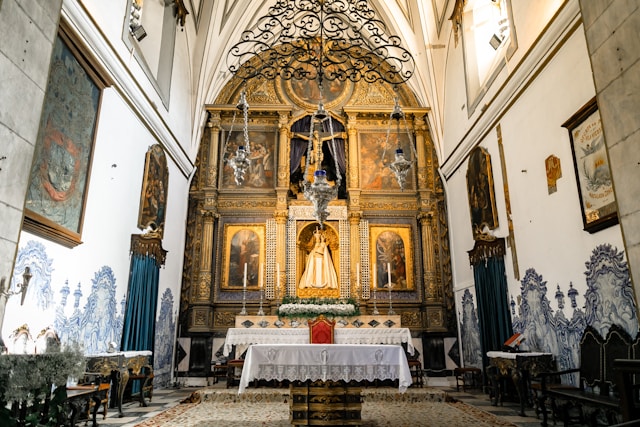
Ta’ Pinu: The Heart of Gozo’s Religious Landscape
Introduction
Ta’ Pinu, a magnificent neo-Romanesque basilica nestled on the vibrant island of Gozo, holds a sacred place in the hearts of the Maltese and beyond. With its ethereal beauty and profound spiritual significance, Ta’ Pinu stands as a testament to the deep-rooted faith of the Gozitan people. Join us as we embark on a pilgrimage to uncover the captivating history, architectural marvels, and spiritual essence of this beloved shrine.
A Tapestry of History
The origins of Ta’ Pinu are shrouded in legend, with tales of miraculous apparitions and divine interventions. In the mid-16th century, a young woman named Karmni Grima experienced a series of visions of the Virgin Mary, who instructed her to build a church on the site. Despite initial skepticism, the bishop of Gozo eventually granted permission, and construction began in 1920.
The church’s design was entrusted to renowned Maltese architect Lorenzo Gafà, who envisioned a blend of neo-Romanesque and Byzantine elements. The result is a breathtaking masterpiece, characterized by its imposing façade, soaring bell towers, and intricate stonework. Ta’ Pinu was consecrated in 1931 and elevated to the status of a minor basilica in 1932.
Architectural Splendor
Ta’ Pinu’s facade is a symphony of limestone and sandstone, adorned with elaborate carvings and sculptures. The central portal features a tympanum depicting the Assumption of the Virgin Mary, while the upper portion is graced by intricate rose windows and a series of arched niches. The two towering bell towers, adorned with elegant louvers and pinnacles, provide a majestic frame for the basilica’s silhouette.
Inside, Ta’ Pinu unfolds as a spacious and awe-inspiring sanctuary. The vaulted ceiling is supported by twelve monolithic columns, symbolizing the twelve apostles. The walls are lined with side altars dedicated to various saints, each adorned with exquisite paintings and sculptures.
A Haven of Devotion
Ta’ Pinu is not merely a architectural marvel; it is a hub of religious devotion and pilgrimage. Thousands of pilgrims flock to the basilica every year, seeking solace, healing, and divine guidance. The shrine houses a venerated statue of the Virgin Mary, known as Our Lady of Ta’ Pinu, which is believed to have miraculous powers.
Throughout the year, Ta’ Pinu hosts a series of religious festivals and events, including the annual feast of the Assumption of the Virgin Mary in August. During these celebrations, the basilica reverberates with the sound of music, prayer, and the collective spirit of the faithful.
Spiritual Significance
Ta’ Pinu transcends physical beauty and architectural grandeur; it is a profound symbol of the spiritual bond between the people of Gozo and the divine. The basilica is a place of pilgrimage, prayer, and reflection, where countless souls have found solace, hope, and renewal.
The statue of Our Lady of Ta’ Pinu is particularly revered by the Maltese and Gozitans, who believe in her intercession and protection. She is often invoked in times of need, illness, and adversity, and her image graces countless homes and churches throughout the Maltese Islands.
Practical Information
Ta’ Pinu is located in the village of Għarb, on the western coast of Gozo. It is accessible by public transportation or by car. Ample parking is available in the vicinity of the basilica.
The basilica is open to visitors daily, from morning until evening. Mass is celebrated several times each day, and there are regular tours available for those who wish to delve deeper into the history and significance of the shrine.
Conclusion
Ta’ Pinu is a beacon of faith, a sanctuary of hope, and a testament to the enduring power of spirituality. Its captivating history, architectural splendor, and profound spiritual essence make it a destination of immense significance for pilgrims, tourists, and believers alike. Whether you seek solace, inspiration, or simply a glimpse of the Maltese Islands’ rich cultural heritage, Ta’ Pinu awaits you with open arms.
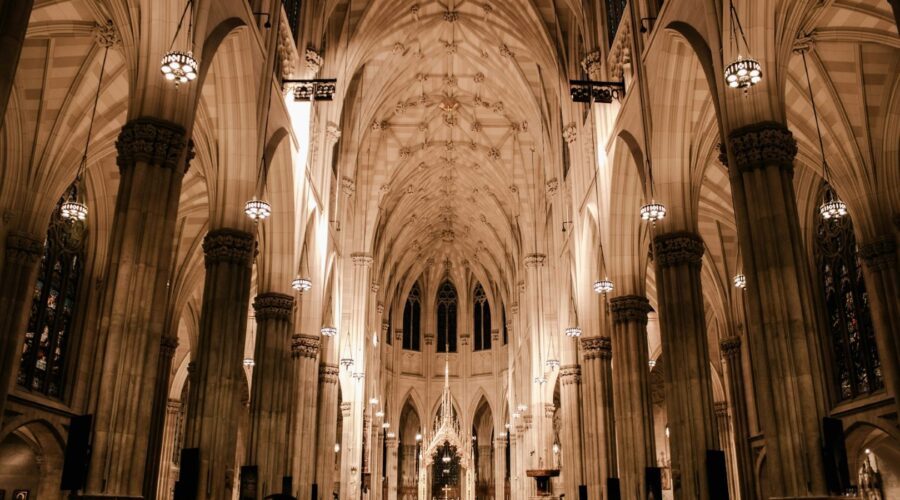
St. Cyril: The Apostle to the Slavs and Visionary Linguist
Early Life and Missionary Zeal
St. Cyril (c. 827-869), born Constantine, was a Byzantine monk, scholar, and missionary. His missionary zeal began at an early age when he became a member of the “Philosophers’ Circle” in Constantinople, where he studied theology, philosophy, and languages. Cyril’s fluency in multiple languages, including Greek, Latin, Hebrew, Syriac, and Slavic dialects, would prove invaluable in his role as an apostle to the Slavic peoples.
Mission to the Slavs
In 862, Cyril and his brother Methodius were summoned by Prince Rastislav of Great Moravia, a Slavic state in what is now the Czech Republic, to create a written language for his people. Cyril and Methodius accepted the challenge and embarked on the creation of the Glagolitic alphabet, the first written script specifically designed for Slavic languages.
Creation of Slavic Liturgy
Cyril and Methodius realized that the translation of liturgical texts into Slavic was crucial for the effective evangelization of the Slavs. They translated the Bible, missals, and other liturgical texts into Old Church Slavonic, laying the foundation for a unified Slavic liturgy. This translation allowed for the celebration of divine services in the Slavic language, fostering a deeper connection between the people and their faith.
Conflict and Exile
Despite their success in spreading Christianity and literacy among the Slavs, Cyril and Methodius faced opposition from German bishops who asserted their authority over the Slavic Church. They traveled to Rome in 867 to seek support from Pope Nicholas I, who consecrated Methodius as Archbishop of Pannonia and Moravia. However, after Cyril’s death in Rome in 869, German bishops successfully lobbied for the suppression of Cyril and Methodius’s work.
Legacy and Impact
- Slavic Language and Literacy: Cyril and Methodius’s creation of the Glagolitic alphabet and translation of liturgical texts paved the way for the flourishing of Slavic literature, culture, and identity.
- Spread of Christianity: Their missionary work brought Christianity to Eastern Europe and established a strong Slavic Christian tradition.
- Patron Saints of Europe: In 1980, Pope John Paul II declared Cyril and Methodius joint patron saints of Europe, recognizing their contributions to the unification of the continent.
- Cyrillic Alphabet: The Glagolitic alphabet was later replaced by the Cyrillic alphabet, which is used today in various Slavic languages, including Russian, Ukrainian, and Bulgarian.
Feast Day and Veneration
St. Cyril’s feast day is celebrated on February 14 in both the Eastern Orthodox Church and the Roman Catholic Church. He is venerated as a saint, teacher, and patron of Bulgaria, Slovakia, the Czech Republic, and the Slavic peoples. His contributions to Slavic culture and Christianity continue to be celebrated and remembered to this day.
Additional Resources
- Saint Cyril and Saint Methodius (Catholic Encyclopedia)
- Cyril and Methodius (Encyclopedia Britannica)
Conclusion
St. Cyril, the Apostle to the Slavs, played a pivotal role in shaping the cultural and spiritual landscape of Eastern Europe. His creation of a written Slavic language, translation of liturgical texts, and missionary work laid the foundation for a vibrant Slavic Christian tradition. Cyril and Methodius’s unwavering commitment to spreading Christianity and preserving Slavic culture continues to inspire the people of their legacy today.

Discover the Prince of Peace Catholic Church: A Spiritual Haven in Plano, Texas
About Prince of Peace Catholic Church
Prince of Peace Catholic Church is a vibrant and welcoming parish in Plano, Texas. Established in 1985, the church has grown into a thriving community dedicated to serving the spiritual needs of its parishioners and the surrounding area. With its stunning architecture, spacious facilities, and active ministries, Prince of Peace offers a rich and fulfilling Catholic experience.
Mass and Sacraments
Prince of Peace offers a variety of Mass times to accommodate the schedules of its parishioners:
- Saturday: 4:30 PM
- Sunday: 7:30 AM, 9:00 AM, 11:00 AM, 5:00 PM
- Monday: 7:00 AM
- Tuesday: 9:00 AM
- Wednesday: 9:00 AM, 7:00 PM
- Thursday: 9:00 AM
- Friday: 9:00 AM
In addition to Mass, Prince of Peace also offers the sacraments of Baptism, Confirmation, Reconciliation, and Matrimony. For information on receiving the sacraments, please contact the parish office.
Ministries and Organizations
Prince of Peace Catholic Church offers a wide range of ministries and organizations for its parishioners to engage in. These ministries are designed to serve the needs of the parish and the community, and include:
- Altar Society
- Choir
- Eucharistic Ministers
- Lectors
- Prayer Groups
- Rosary Society
- Youth Group
- Knights of Columbus
Education and Formation
Prince of Peace Catholic Church places a strong emphasis on education and formation for all ages. The parish offers a variety of programs and resources, including:
- Sunday School
- Vacation Bible School
- Adult Faith Formation
- Youth Retreats
- Bible Study Groups
Social and Outreach Programs
Prince of Peace Catholic Church is actively involved in serving the local community. The parish offers a variety of social and outreach programs, including:
- Community Dinners
- Food Pantry
- Clothing Drive
- Soup Kitchen
- Homeless Shelters
Contact Information
Prince of Peace Catholic Church
5100 Plano Parkway West
Plano, TX 75093
Phone: (972) 964-8176
Email: [email protected]
Website: https://www.popcc.org/
Conclusion
Prince of Peace Catholic Church is a vibrant and welcoming parish in Plano, Texas. With its stunning architecture, spacious facilities, active ministries, and commitment to serving its parishioners and the community, Prince of Peace offers a rich and fulfilling Catholic experience. Whether you are seeking spiritual growth, community involvement, or simply a place to connect with fellow believers, Prince of Peace Catholic Church is a place where you can find a home.
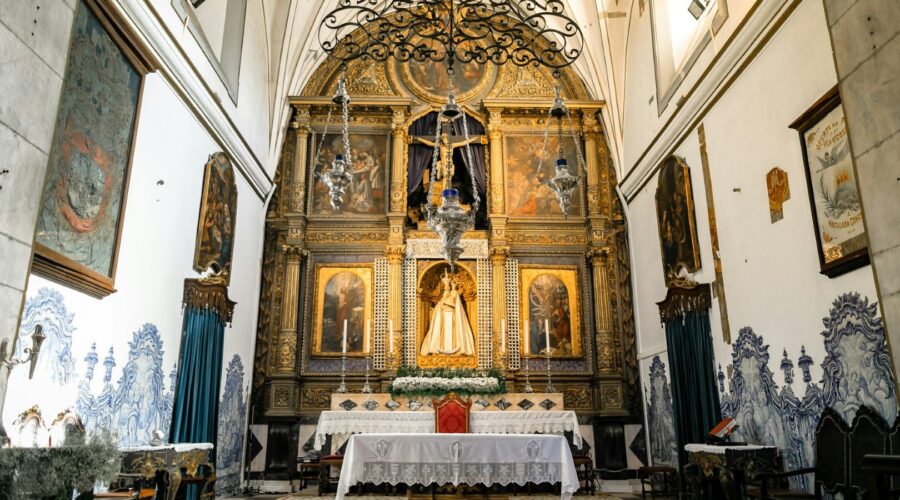
St. Paul’s Chapel: A Historic Landmark in Lower Manhattan
“`html
History
St. Paul’s Chapel is the oldest surviving public building in Manhattan, New York City. It was built between 1764 and 1766 and has been an active Episcopal parish since its consecration in 1766. The chapel is located on Broadway, between Fulton and Vesey Streets, in the heart of the Financial District.
St. Paul’s Chapel was designed by Thomas McBean, a prominent architect of the time. The chapel is built in the Georgian style, with a red brick exterior and a white steeple. The interior of the chapel is simple and elegant, with a high ceiling and large windows.
St. Paul’s Chapel has been the site of many important events in American history. In 1789, George Washington attended services at the chapel after he was inaugurated as the first President of the United States. In 1812, the chapel was used as a hospital for wounded soldiers during the War of 1812. And in 1940, the chapel was the site of a memorial service for the victims of the sinking of the RMS Titanic.
Architecture
St. Paul’s Chapel is a beautiful example of Georgian architecture. The chapel is built with red brick and has a white steeple. The exterior of the chapel is simple and elegant, with large windows and a few decorative details.
The interior of the chapel is also simple and elegant. The chapel has a high ceiling and large windows. The walls are white and the pews are made of dark wood.
The Steeple
The steeple of St. Paul’s Chapel is one of the most iconic landmarks in Lower Manhattan. The steeple is 208 feet tall and is made of white wood. The steeple is topped by a golden weather vane.
The Bell Tower
The bell tower of St. Paul’s Chapel is located at the southwest corner of the chapel. The bell tower is made of red brick and has a white steeple. The bell tower houses a bell that was cast in 1797.
Significance
St. Paul’s Chapel is a historic landmark and a significant part of New York City’s history. The chapel has been the site of many important events in American history, and it continues to be an active Episcopal parish today.
Landmark Status
St. Paul’s Chapel was designated a National Historic Landmark in 1960. The chapel is also a New York City Landmark.
Religious Significance
St. Paul’s Chapel is an active Episcopal parish. The chapel offers a variety of services, including Sunday services, weekday services, and special services.
Tourism
St. Paul’s Chapel is a popular tourist destination. The chapel is open to the public every day of the week.
Visiting St. Paul’s Chapel
St. Paul’s Chapel is located at 209 Broadway, between Fulton and Vesey Streets, in the Financial District of Manhattan, New York City.
The chapel is open to the public every day of the week.
- Monday-Friday: 10:00am-6:00pm
- Saturday: 10:00am-5:00pm
- Sunday: 8:00am-6:00pm
There is no admission fee to visit St. Paul’s Chapel.
More Information
For more information about St. Paul’s Chapel, please visit the chapel’s website: https://www.saintpaulschapel.org
“`
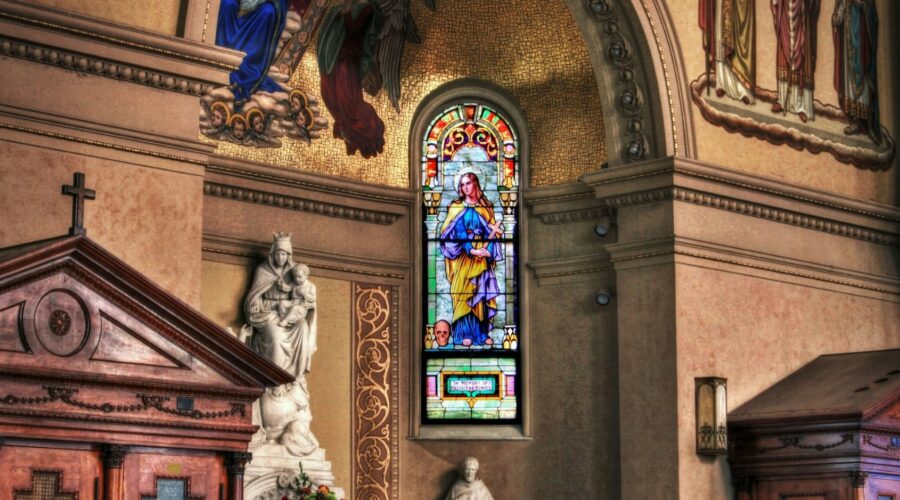
Exploring the Divine Liturgy of the Eucharist: A Comprehensive Guide
Introduction
The Liturgy of the Eucharist, a cornerstone of Christian worship, holds profound significance for believers. From its origins in the Upper Room to its central role in present-day faith, this sacred rite offers a glimpse into the transformative power of God’s Word and presence. This comprehensive guide will delve into the various aspects of the Liturgy of the Eucharist, unraveling its history, structure, symbolism, and the spiritual nourishment it provides to the faithful.
Historical Origins of the Eucharist
The Eucharist finds its roots in the Last Supper of Jesus Christ with his disciples, as recounted in the Gospels. During that pivotal meal, Jesus took bread and wine, blessed them, and instructed his followers to consume them in remembrance of his sacrifice. This act, known as the institution of the Eucharist, marked the foundation of the sacrament that would become an essential part of Christian worship.
Structure of the Liturgy of the Eucharist
The Liturgy of the Eucharist is typically divided into four main parts:
1. Gathering Rite
The Gathering Rite opens the service and invites the congregation to worship together. It includes prayers, hymns, and the presentation of the bread and wine.
2. Liturgy of the Word
In the Liturgy of the Word, Scripture readings from the Old and New Testaments are proclaimed. These readings serve to connect the congregation to God’s ongoing revelation and prepare them for the sacrament.
3. Liturgy of the Eucharist
The heart of the Liturgy of the Eucharist, this section involves the preparation of the bread and wine, their consecration by the priest, and the distribution of Communion to the faithful. It is during this time that the transformation of the elements into the Body and Blood of Christ takes place.
4. Concluding Rite
The Concluding Rite concludes the liturgy with prayers of thanksgiving, a blessing, and the dismissal of the congregation. It serves as a reminder that the encounter with God during the Eucharist extends beyond the service itself.
Symbolism in the Eucharist
The elements of the Eucharist, namely bread and wine, hold profound symbolic meaning:
- Bread: Represents the broken body of Christ, his sacrifice and nourishment for the faithful.
- Wine: Symbolizes the blood of Christ, his life poured out for the redemption of humanity.
Spiritual Significance of the Eucharist
The Liturgy of the Eucharist holds immense spiritual significance for believers:
1. Communion with Christ
Through the reception of Communion, the faithful enter into a mystical union with Christ. They share in his life, his sacrifice, and his promise of eternal salvation.
2. Nourishment and Healing
The Eucharist serves as spiritual sustenance, nourishing the soul and offering healing to the wounded heart. It provides strength and guidance for the journey of faith.
3. Unity of the Church
The Eucharist fosters unity among the faithful. By participating in the same meal, believers are reminded of their common bonds in Christ and their call to live in harmony with one another.
Tips for a Meaningful Experience
To maximize the spiritual benefits of the Liturgy of the Eucharist, consider these tips:
- Be present and attentive: Focus on God’s presence and the significance of the service.
- Prepare yourself: Reflect on your relationship with Christ and seek forgiveness for any sins that may hinder your communion.
- Receive Communion with reverence: Approach the altar with a sense of awe and gratitude.
- Meditate on the experience: Take time after Communion to reflect on its impact and how it will guide your daily life.
Conclusion
The Liturgy of the Eucharist is a sacred and transformative ritual that offers a profound encounter with God’s grace. Through its symbolic elements and spiritual significance, it nourishes the souls of the faithful, strengthens the unity of the Church, and offers a glimpse into the eternal banquet to come. By embracing the Liturgy of the Eucharist with open hearts, believers draw closer to Christ and experience the fullness of his love and redemption.

Finding Hope and Renewal at New Hope Missionary Baptist Church
About New Hope Missionary Baptist Church
Immerse yourself in the vibrant community of New Hope Missionary Baptist Church, a beacon of faith and hope in the heart of the city. Our church is a spiritual haven where believers gather to worship, grow in their faith, and make a positive impact on the world.
Our Mission and Values
Mission Statement
To proclaim the gospel of Jesus Christ, nurture the spiritual growth of believers, and serve our community with love and compassion.
Core Values
- Biblical Truth
- Christian Fellowship
- Mission-Oriented
- Servant Leadership
- Community Engagement
Worship Services
Join us every Sunday for our worship services, where we celebrate God’s presence and engage with the Word of God.
Sunday Service Times
- 8:00 AM – Traditional Service
- 10:30 AM – Contemporary Service
Our services are filled with uplifting music, inspiring messages, and opportunities for personal reflection and growth.
Ministries and Outreach
We offer a wide range of ministries and programs to support and nurture our members and engage with the community.
Ministries
- Sunday School
- Youth Group
- Women’s Ministry
- Men’s Ministry
- Seniors’ Ministry
Outreach Programs
- Food Pantry
- Clothing Closet
- Tutoring Program
- Community Health Fair
- Mission Trips
Leadership
Our church is led by a dedicated team of pastors and deacons who shepherd the congregation with wisdom, compassion, and love.
Pastoral Staff
- Rev. Dr. John Smith, Senior Pastor
- Rev. Jane Doe, Associate Pastor
Deacons
- Dea. Michael Jones
- Dea. Mary Brown
- Dea. Thomas Williams
Location and Contact Information
We invite you to visit us at our church located at 123 Main Street, Anytown, CA 12345.
For more information, please contact our church office at (555) 123-4567 or visit our website at www.newhopembc.org.
Join Our Community of Faith
At New Hope Missionary Baptist Church, we believe that every person is created with a purpose and that God has a plan for their life. If you are seeking a place where you can grow in your faith, find hope and renewal, and make a difference in the world, we welcome you to join our community of believers.
Come and experience the transformative power of God’s love at New Hope Missionary Baptist Church. We look forward to meeting you and helping you on your spiritual journey.
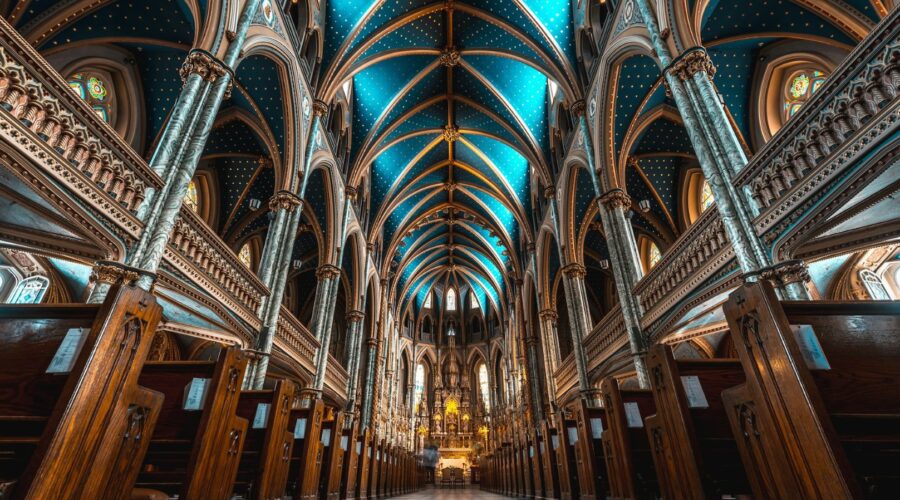
Annunciation: The Angelic Proclamation of Christ’s Birth
A Profound Event in Christian History
The Annunciation, a pivotal moment in Christian tradition, marks the announcement by the angel Gabriel to the Virgin Mary that she would give birth to Jesus Christ, the Son of God. This extraordinary event holds immense significance for shaping the course of human history.
The Scriptural Account
The Annunciation is described in the Gospel of Luke (1:26-38). According to the biblical narrative, the angel Gabriel appeared to Mary, a pious young woman engaged to Joseph, a carpenter from Nazareth. Gabriel announced, “Greetings, you who are highly favored! The Lord is with you; blessed are you among women.”
Mary was initially troubled by the angel’s words, but Gabriel reassured her by explaining that she had found favor with God and would bear a son who would be “holy” and “called the Son of God.” Mary, in faith and obedience, responded, “Behold, I am the servant of the Lord; let it be to me according to your word.”
The Significance of the Annunciation
The Annunciation carries profound religious and theological implications:
1. The Incarnation:
The Annunciation marks the beginning of the incarnation of Jesus Christ, the divine Son of God, taking human form. Through Mary’s consent, the eternal Word became flesh, bridging the gap between heaven and earth.
2. The Prophecy Fulfilled:
The Annunciation fulfilled the prophecy of Isaiah (7:14), which foretold that a virgin would give birth to a son who would be called Immanuel, meaning “God with us.”
3. The Role of Mary:
Mary’s role in the Annunciation is pivotal. Her obedience and faith not only enabled the birth of Christ but also set the stage for her future role as the mother of Jesus.
The History of the Annunciation
The Annunciation has been depicted and celebrated in Christian art, literature, and music throughout history:
1. Early Christian Art:
In early Christian catacombs and mosaics, the Annunciation is often portrayed as Mary being visited by the angel Gabriel, who is typically depicted with wings.
2. Medieval and Renaissance Art:
During the Middle Ages and Renaissance, the Annunciation became a popular subject for painters such as Giotto, Fra Angelico, and Leonardo da Vinci. These works often depicted Gabriel as holding a lily, a symbol of purity, and Mary as holding a book, representing her literacy.
3. Music and Literature:
The Annunciation has inspired numerous musical compositions, including “Ave Maria” by Schubert and “The Annunciation” by Benjamin Britten. It has also been the subject of poetry and prose, such as the poem “The Annunciation” by W.H. Auden.
The Annunciation Today
The Annunciation remains a significant event in Christian tradition, commemorated annually on March 25th. Christians reflect on the biblical account, celebrate the Incarnation, and marvel at the role of Mary as the Mother of God. The Annunciation continues to be a source of hope, faith, and inspiration for believers worldwide.
Additional Information
1. Feast of the Annunciation:
The Feast of the Annunciation is celebrated on March 25th by both Western and Eastern Christians. It marks the beginning of the liturgical year in the Roman Catholic Church.
2. Theological Reflections:
Theological scholars and philosophers have devoted much discussion to the Annunciation, exploring its implications for the nature of Christ, the role of Mary, and the relationship between God and humanity.
3. Marian Devotion:
The Annunciation plays a central role in Marian devotion, which venerates Mary as the Mother of God and a model of humility and obedience.

Sacred Ground: Exploring the History, Significance, and Preservation of Revered Places
Sacred ground refers to any place imbued with spiritual or religious significance. These sites are often deeply intertwined with cultural practices, traditions, and beliefs. Throughout history, sacred grounds have served as places of worship, meditation, pilgrimage, and burial.
History and Significance of Sacred Ground
The concept of sacred ground has existed since the dawn of human civilization. Archaeological evidence suggests that early humans often designated specific locations as sacred, such as caves, mountains, and bodies of water. These places were believed to have spiritual or supernatural powers and were often used for rituals, ceremonies, and divination.
As societies evolved, the concept of sacred ground became more formalized. Religious institutions and governments established specific rules and regulations governing the use and protection of these sites. Many sacred grounds were designated as temples, shrines, or other religious structures, while others remained as natural landmarks or landscapes.
Examples of Sacred Grounds
Sacred grounds can be found in every part of the world and represent a wide range of religious and cultural traditions. Some notable examples include:
- Stonehenge in England
- The Great Pyramids of Giza in Egypt
- The Temple Mount in Jerusalem
- Kashi Vishwanath Temple in India
- Uluru (Ayers Rock) in Australia
Preserving Sacred Ground
Preserving sacred grounds is essential for both their cultural and environmental significance. These sites often contain valuable historical artifacts, architectural remains, and natural features that are irreplaceable. Moreover, sacred grounds are often integral to the identity of local communities and play a vital role in cultural heritage.
There are several ways to preserve sacred ground, including:
Legal Protection:
Government agencies can establish laws and regulations to protect sacred grounds from development, desecration, or destruction. This can include designating sites as historical landmarks, national parks, or other protected areas.
Community Involvement:
Local communities can play a crucial role in protecting sacred grounds by advocating for their preservation and participating in stewardship activities. This can involve monitoring sites, hosting educational programs, and organizing cleanups.
Religious and Cultural Institutions:
Religious and cultural institutions can also play a significant role in preserving sacred grounds by promoting respectful use and encouraging responsible tourism. This can involve providing educational materials, establishing visitation protocols, and working with government agencies to protect sites.
Benefits of Preserving Sacred Ground
Preserving sacred ground offers numerous benefits, including:
Cultural Heritage:
Sacred grounds are repositories of cultural heritage and provide a tangible connection to the past. They preserve historical artifacts, architectural remains, and intangible traditions that enrich the lives of present and future generations.
Environmental Conservation:
Many sacred grounds are located in areas of ecological significance and provide habitat for endangered species. Preserving these sites not only protects cultural heritage but also contributes to environmental conservation and biodiversity.
Tourism and Economic Development:
Sacred grounds can attract tourists from around the world, generating revenue and economic opportunities for local communities. Sustainable tourism can also help to preserve sacred grounds by raising awareness of their importance.
Community Identity:
Sacred grounds often play a central role in the identity of local communities. Preserving these sites strengthens community bonds and fosters a sense of place and belonging.
Spiritual and Religious Significance:
For many people, sacred grounds hold deep spiritual and religious meaning. Preserving these sites ensures that they remain available for worship, meditation, pilgrimage, and other religious practices.
Conclusion
Sacred ground is a precious heritage that connects us to our past, present, and future. Preserving these sites is essential for protecting cultural heritage, environmental conservation, economic development, and community identity. By working together, governments, communities, religious institutions, and cultural organizations can ensure that sacred grounds continue to inspire and enrich generations to come.
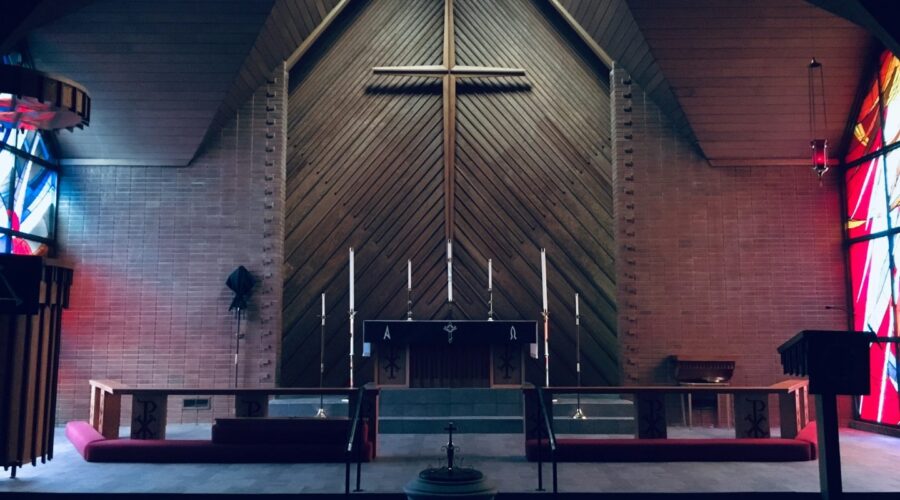
St Martin’s Church: A Historical and Architectural Gem in the Heart of Canterbury
Introduction
St Martin’s Church is an ancient and beautiful place of worship located in the heart of Canterbury, England. With a history stretching back to the Norman Conquest, the church has witnessed centuries of religious, social, and architectural change. This article delves into the fascinating history, architectural features, and religious significance of St Martin’s Church, providing a comprehensive guide for visitors and history enthusiasts alike.
Historical Overview
Anglo-Saxon and Norman Origins
The earliest known church on the site of St Martin’s dates back to the Anglo-Saxon period, around the 6th century AD. This humble wooden structure was replaced by a stone church built by the Normans after the Conquest in 1066. The Norman church formed part of the Abbey of St Augustine, one of the most important religious institutions in medieval England.
Medieval Enlargement and Renovation
During the 12th and 13th centuries, St Martin’s Church underwent significant expansion and renovation. The nave was extended, the chancel was rebuilt, and the tower was added. The church also acquired a number of important relics, including the head of St Augustine of Canterbury.
Tudor and Stuart Period
The Tudor and Stuart periods saw further changes to St Martin’s Church. The interior was remodeled in a more Protestant style, and the tower was raised to its present height. The church also played a role in the English Civil War, being used as a garrison by Royalist forces.
Victorian Restoration
In the 19th century, St Martin’s Church underwent a major restoration under the direction of architect George Gilbert Scott. Scott’s work included rebuilding the chancel, adding a new organ, and installing stained glass windows. The restoration restored the church to its former glory and ensured its preservation for future generations.
Architectural Features
St Martin’s Church is a remarkable example of Norman and Gothic architecture.
Exterior
The exterior of the church is dominated by the imposing tower, which rises to a height of 75 meters. The tower features a series of arched windows and is topped by a battlemented parapet. The nave and chancel are both long and rectangular, with large windows that flood the interior with light.
Interior
The interior of the church is spacious and airy, with a vaulted ceiling supported by massive columns. The nave and chancel are separated by a large chancel arch. The chancel contains a beautiful stained glass window depicting the crucifixion, and the nave is adorned with a series of memorials to former members of the congregation.
Crypt
Beneath the chancel lies a large vaulted crypt. The crypt dates back to the Norman period and houses a collection of medieval artifacts, including a stone coffin.
Religious Significance
St Martin’s Church has been a center of Christian worship for over a thousand years. The church is dedicated to Saint Martin of Tours, a 4th-century bishop known for his generosity and compassion. Over the centuries, the church has played an important role in the religious life of Canterbury and has been visited by countless pilgrims and worshippers.
Visiting St Martin’s Church
St Martin’s Church is open to visitors every day of the week. Visitors are welcome to explore the church, admire its architecture, and learn about its history. Guided tours are available by appointment.
Conclusion
St Martin’s Church is a beautiful and historic building that has stood at the heart of Canterbury for centuries. Its rich history, stunning architecture, and religious significance make it a must-visit destination for anyone interested in history, architecture, or religion. Whether you are a local resident or a visitor from afar, be sure to take some time to explore this architectural gem and immerse yourself in its fascinating story.